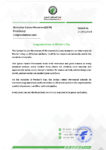Workers: Role and Importance

Introduction:
In modern sciences, there is no specific, unified definition of the term “workers” in the traditional sense of the word, which is associated with manual or industrial labor. However, we can approach this term from several perspectives:
In sociology and economics, workers are categorized as follows:
- (The Working Class), Refers to individuals who sell their labor in exchange for wages, whether they work in factories, offices, or services.
- (The Workforce), Encompasses all individuals who are able and willing to work, regardless of whether they are currently employed.
- (Independent Workers), Individuals who are self-employed and not employed by a company.
In computer science and artificial intelligence, workers are defined as follows:
- (Automated Worker), A computer program designed to perform specific tasks, such as robots working in factories.
- (Intelligent Worker), A type of AI system capable of learning and adapting to its environment.
Many sciences examine workers’ behavior and their impact on society and the economy. Among these fields:
- Sociology: Studies social relationships among workers, the impact of work on social identity, and labor movements.
- Economics: Examines the relationship between labor supply and demand, wage determination, and income distribution.
- Industrial Psychology: Focuses on individuals’ behavior in the workplace, ways to improve productivity, and job satisfaction.
- Computer Science: Explores the design and development of AI systems and robots that perform tasks as substitutes for human labor.
Understanding workers’ conditions helps to comprehend the social and economic changes occurring in society. It also contributes to developing better policies to protect workers’ rights and improve their working conditions. Additionally, it aids in creating new methods to boost productivity and enhance work efficiency, driving the development of new technologies to improve worker performance and reduce physical effort.
The concept of “workers” remains broad and multifaceted, intersecting with many scientific fields.
Historical Context:
The condition of workers throughout history is a long journey of struggle and change, as the history of workers reflects a continuous fight to improve working conditions, increase wages, and secure basic rights such as set working hours and sick leave. This lengthy journey has seen ups and downs, victories and defeats, but ultimately shaped the modern societies we live in today through three phases:
- Ancient and Medieval Ages:
- In the ancient and medieval periods, the concept of the “worker” as we know it today did not exist! Work was often associated with slavery or feudalism, where workers’ rights were almost nonexistent, working hours were long, conditions were harsh, and wages were minimal.
- The Industrial Revolution and Major Transformations:
- With the Industrial Revolution in the 18th century, factories and industrial cities began to emerge, leading to an increase in the number of workers and their transformation into a significant social and economic force. However, working conditions remained extremely poor, with children working in factories, long working hours, low wages, and frequent accidents.
Emergence of Labor Movements
In response to these harsh conditions:
Labor movements began to emerge in the late 18th and early 19th centuries. These movements aimed to improve working conditions, increase wages, reduce working hours, and establish labor unions to defend workers’ rights.
Throughout the 19th and 20th centuries, labor movements achieved many significant accomplishments, including:
- A. Working Hours: Daily working hours were reduced from 12 hours or more to 8 hours in many countries.
- B. Child Rights: Child labor was prohibited in many industries, and laws were enacted to set a minimum age for work.
- C. Minimum Wages: Minimum wage standards were established in many countries to ensure a decent living for workers.
- D. Sick Leave: Workers began to receive paid sick leave.
- E. Social Insurance: Social insurance systems were established to provide protection for workers in cases of illness, disability, and old age.
The history of workers remains a long struggle for social and economic justice. Despite the challenges faced by workers today, labor movements continue to play a vital role in defending workers’ rights and improving their working conditions. The history of workers is lengthy and complex, varying from one country to another.
Syrian Workers:
The condition of workers in Syria today faces significant and unprecedented challenges due to the ongoing conflict for several years and its economic and humanitarian repercussions. Some of the key challenges can be summarized as follows:
- Wage Deterioration and Purchasing Power:
- A. Decline in the Value of the Syrian Pound: Massive inflation and the depreciation of the pound have significantly eroded wages, making it difficult for workers to meet their basic needs.
- B. Inability to Bargain: In the face of challenging economic conditions, workers find it difficult to negotiate for wage increases or improved working conditions, placing them in a position of weakness.
- Rising Unemployment and Informal Work:
- A. Loss of Jobs: The ongoing conflict has led to the closure of many businesses and a decline in production, causing many individuals to lose their jobs.
- B. Resorting to Informal Work: Many Syrians have turned to working in the informal sector to earn an income, which deprives them of social protections and basic workers’ rights.
- Poor Working Conditions:
- A. Absence of Labor Laws: In the midst of chaos and division, the enforcement of labor laws has diminished, leading to widespread exploitation of workers and exposure to poor working conditions.
- B. Long Working Hours and Low Wages: Many workers are subjected to long hours of work for meager wages, without receiving vacation days or health insurance.
- Labor Migration:
- A. Seeking Better Opportunities: The deterioration of economic and living conditions has driven many Syrians to migrate in search of better job prospects in neighboring countries or Europe.
- B. Loss of Skills: The emigration of skilled workers has exacerbated the shortage of qualified labor in various sectors, hindering recovery and development efforts within the country.
- Impact of Economic Sanctions:
- A. Restrictions on Trade and Investment: Economic sanctions imposed on Syria have led to limitations on trade and investment, exacerbating the economic crisis and increasing the suffering of workers.
- Challenges Faced by Workers in Opposition-Controlled Areas:
- A. Resource Shortages: Opposition-controlled areas in Syria suffer from a lack of resources, making it difficult to secure job opportunities for the unemployed.
- B. Security Instability: Ongoing security instability affects economic activities and makes it challenging for workers to conduct their businesses normally.
Therefore, workers in Syria face significant challenges that require joint efforts from the international community, relevant Syrian authorities, and civil society organizations to improve their living conditions and provide them with decent job opportunities.
The Importance of Workers’ Role in Building Syria:
Workers play a pivotal role in the construction of any nation, and Syria is no exception. After years of conflict and destruction, the reconstruction and development of Syria heavily rely on the efforts of workers. Thus, their importance lies in the following aspects:
- Essential Workforce: Workers constitute the essential workforce in any reconstruction process, as they are responsible for building homes, factories, schools, and other infrastructure.
- Economic Contribution: Through their labor, workers help stimulate the economy, increase production, and create new job opportunities.
- Community Building: Workers are not just a labor force; they are an integral part of society. Their participation in the reconstruction process fosters a sense of belonging and national unity.
- Achieving Sustainable Development: By working on sustainable infrastructure projects, workers contribute to the sustainable development of their country.
- Changing Reality: Workers can be a driving force for positive change in society by advocating for their rights and improving their working conditions.
Challenges Facing Workers in Syria:
Despite the significant role of workers, they face many difficult circumstances in Syria, including:
- Unemployment: As a result of conflict and destruction, many Syrians suffer from unemployment.
- Poor Wages and Working Conditions: Workers experience low wages and poor working conditions, particularly in the informal sectors.
- Skill Shortages: Many workers need training and skill development to meet the changing demands of the labor market.
- Displacement and Homelessness: Displacement and homelessness have led to family breakdowns and the scattering of the workforce.
Workers remain the cornerstone of any society, and their role in building a new Syria is invaluable. By supporting and empowering them, we can construct a strong and prosperous Syria.
Negatives of Weak Labor Class:
The weakness of the labor class is considered one of the biggest problems facing many societies, including the Syrian society. This weakness has wide-ranging negative implications on all economic, social, and political levels. The most important of these negatives are generally seen as:
- Deterioration of Living Standards: The weakness of the labor class leads to a general deterioration in living standards, as the decline in wages and purchasing power reflects on all family and community members.
- Increase in the Gap Between the Rich and the Poor: The weakness of laborers leads to an increase in the gap between the rich and the poor, creating social tensions and weakening community cohesion.
- Decline in Productivity: Weak motivation among workers and low living standards lead to a decline in productivity, negatively affecting economic growth.
- Spread of Poverty and Unemployment: The weakness of the labor class is closely linked to the spread of poverty and unemployment, leading to increased crime and violence rates.
- Deterioration of Public Services: The decline in national income due to weak productivity leads to the deterioration of public services such as health, education, and transportation.
- Weak Social Mobility: The weakness of the labor class reduces individuals’ opportunities for social mobility, limiting their ability to improve their living conditions.
- Political Instability: The weakness of the labor class is often one of the main causes of social and political unrest, as workers feel injustice and exploitation, prompting them to protest and demand their rights.
In the case of Syria specifically:
- Escalation of the Economic Crisis: The Syrian economy suffers from a severe crisis, and the weakness of the labor class contributes to the exacerbation of this crisis and delays the recovery process.
- Emigration of Skilled Workers: Weak wages and poor working conditions drive many skilled Syrians to emigrate, resulting in the country losing its talents and expertise.
- Deterioration of Infrastructure: The lack of public and private investment, due to weak purchasing power, leads to a decline in infrastructure.
- Increased Dependence on Aid: The weakness of the labor class increases Syria’s reliance on foreign aid, reducing its ability to achieve self-sufficiency.
It remains to say that improving the status of the labor class is essential for achieving sustainable development and social stability in Syria.
The ideal situation we aspire to:
For the labor class to be effective and productive, a set of conditions and rights must be provided to ensure their dignity and human rights, encouraging them to exert their utmost effort and creativity. Therefore, we believe that there are essential elements that form this ideal reality:
- Basic Rights of Workers:
- Labor Rights: Workers must enjoy clear and defined labor rights in labor laws, including the determination of working hours, fair wages, vacations, wage protection, prohibition of discrimination, and provision of a safe and healthy work environment.
- Right to Unionize: Workers should have the freedom to form and join unions and participate in collective bargaining to defend their rights and interests.
- Social Protection: A social safety net should be provided for workers, including health insurance, disability and old-age insurance, and compensation for leave and injuries.
- Suitable Working Conditions:
- Safe and Healthy Work Environment: The work environment should be free from hazards and provide all necessary health and safety measures.
- Training and Skill Development: Opportunities for ongoing training and professional development should be provided for workers, contributing to increased productivity and improved performance.
- Education and Awareness: Educational programs should be available to workers about their rights and responsibilities, as well as how to maintain their health and safety.
- Workers’ Participation in Decision-Making:
- Involvement in Decision-Making: Workers should be involved in decisions that affect their professional lives, which enhances their sense of belonging and responsibility.
- Social Dialogue: Social dialogue between employers, workers, and the government should be promoted to reach consensus solutions to the problems facing the labor market.
- Social Justice and Fair Distribution of Wealth:
- Fair Distribution of Wealth and Income: Efforts should be made to reduce the gap between the rich and the poor and to distribute wealth equitably, contributing to social stability.
- Equal Opportunities for All: Equal opportunities should be provided for everyone, regardless of gender, race, religion, or any other form of discrimination.
- Role of the State and Society:
- Role of the State: The state must play an active role in protecting workers’ rights, providing suitable working conditions, and encouraging investment in human capital.
- Role of Civil Society: Civil society can contribute to supporting workers’ rights, raising awareness of their rights, and providing legal support to them.
In summary, achieving an ideal reality for workers requires the concerted efforts of all stakeholders, including governments, employers, labor unions, and civil society. By providing a fair and just working environment, we can achieve a more equitable and prosperous society. These principles can be applied to any community, including the Syrian community. However, realizing this ideal reality will require time and effort, along with strong political will. Additionally, successful experiences from other countries in the field of workers’ rights can be leveraged.
Conclusion:
Changing the reality of workers in Syria represents a significant challenge due to the rigid and complex political landscape, yet it is essential for rebuilding the country and achieving sustainable development.
Therefore, as previously mentioned, this process requires a joint effort from the authorities, labor unions, civil society organizations, and the workers themselves.
Finally, we recommend the following proposed steps to contribute to empowering Syrian workers in Syria:
- Reforming Labor Laws: Conduct a comprehensive review of current labor laws to ensure their alignment with international labor rights standards. Update the laws to include social protection for workers, establish working hours, set minimum wages, protect union rights, and ensure a safe working environment. Ensure strict enforcement of the new laws and hold violators accountable.
- Strengthening Labor Unions: Support the establishment of independent and strong labor unions capable of effectively representing workers’ interests. Expand union membership, encourage workers to join, and raise awareness about the importance of union organization. Empower unions with the right to engage in collective bargaining and participate in decision-making that affects workers’ lives.
- Protecting the Right to Organize and Express: Guarantee workers’ right to express their opinions and demands freely, without fear of retaliation or harassment. Protect the right to peaceful assembly and demonstrations to advocate for their rights. Prevent any form of discrimination against workers based on race, gender, religion, or any other form of discrimination.
- Providing Decent Job Opportunities: Support small and medium-sized enterprises to create new job opportunities. Provide vocational training programs for workers to enhance their competencies and skills, and encourage investment in productive sectors to generate new jobs.
- Building a Strong Social Protection System: Provide comprehensive health insurance for workers and their families, and ensure fair and adequate retirement pensions for workers. Offer unemployment benefits for workers who lose their jobs.
- Enhancing Public-Private Partnerships: Foster ongoing social dialogue between the existing authorities, employers, and labor unions. Develop clear and fair labor policies that contribute to improving workers’ conditions while combating informal work and encouraging formal employment.
- Supporting Civil Society: Empower civil society organizations working in the field of labor rights by providing technical and financial assistance to enable them to fulfill their roles effectively.
Conclusion:
Restoring the rightful labor rights in Syria is a long and arduous process that requires the collective efforts of all stakeholders involved. By taking the aforementioned steps, tangible progress can be achieved in improving the conditions of workers and building a more just and equal society.
Presidency office
Dr. Zaher Ihssan Baadarani
Article
Syrian Future Movement (SFM)






